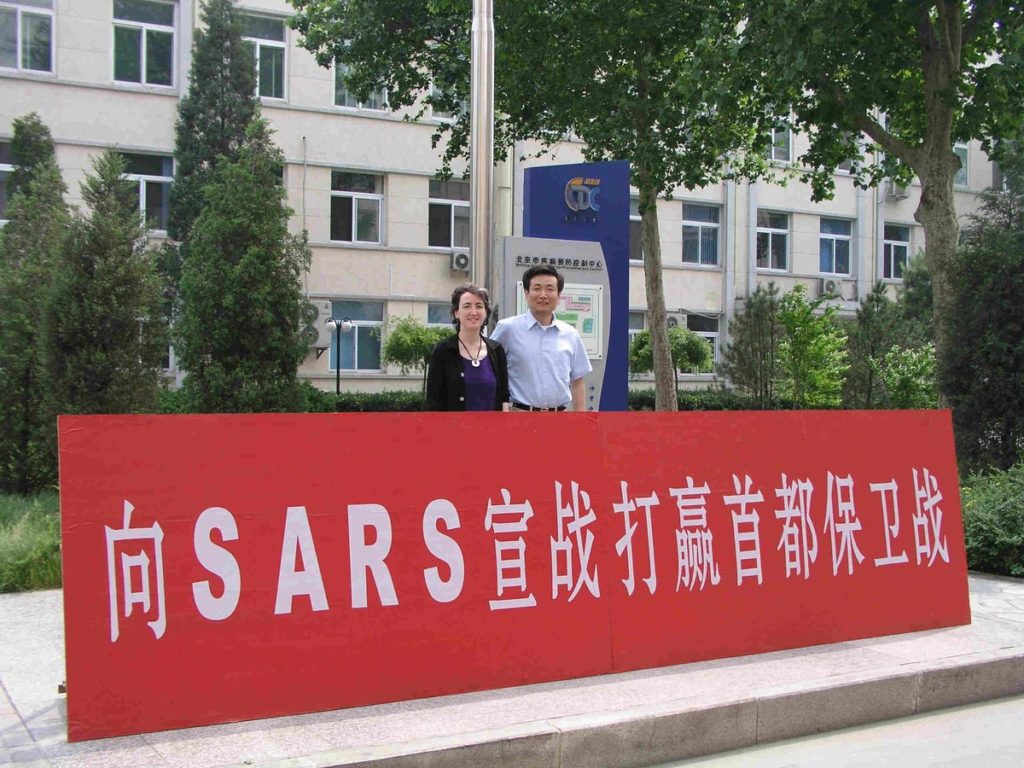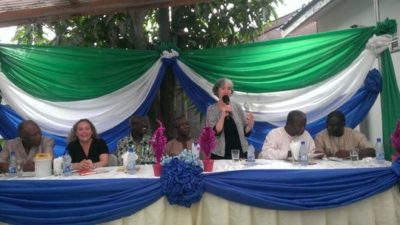Anne Schuchat is the principal deputy director of the US Centers for Disease Control and Prevention (CDC). She led the CDC response to the 2009 H1N1 influenza pandemic and to the SARS outbreak in Beijing in 2003. Previously, she directed the CDC National Center for Immunization and Respiratory Diseases, the Center for Global Health, and the National Center for Infectious Diseases.
Q: What has changed in our approach to global health over the past 20 years?
A: We now have a much better recognition of how interconnected we all are. The 2003 epidemic of severe acute respiratory syndrome (SARS) launched an update of international health regulations and a real commitment for countries to strengthen their capacity to detect, respond to, and prevent epidemics. The 2014–2015 Ebola virus outbreak reminded us that we need every country to have that capacity since the West African countries that were so hard hit had probably the weakest public health capacity in the world.
The second thing that has changed in our approach is the incredible power of public-private partnerships. In the past 20 years, we have seen the launch of groups like the Bill & Melinda Gates Foundation and Gavi, the Vaccine Alliance. We have seen these partnerships take on some of the toughest global health challenges in the world and make a real difference, with governments, the private sector, non-governmental organizations, and communities working together to solve problems.

Anne Schuchat and Weigong Zhou collaborated in Beijing to respond to the 2003 SARS epidemic.
Q: What specific approaches were implemented in response to the recognition that every country needs to be able to manage epidemics?
A: Two examples would be the international health regulations update, which occurred in 2005—194 countries agreed to that—and the commitment of dozens of countries to the global health security agenda, which is a commitment for governments, the private sector, and the global community to work together to find, stop, and prevent epidemics.
Q: If you had one wish for change before the next pandemic, what would it be?
A: Influenza pandemics are quite unique in their ability to rapidly affect all populations, leaving catastrophic tolls of human illness. My wish would be for flu vaccines that have broad, long-lasting protection. That would be a game changer. This universal flu vaccine would eliminate the need for reactive vaccinations when tackling pandemics; instead, we might be able to actually prevent the pandemics.
On a personal level, I saw something similar occur on a smaller scale with meningitis. There used to be periodic large-scale epidemics of meningococcal meningitis group A in a strip of Africa called the meningitis belt. Through a public-private partnership called the Meningitis Vaccine Project, the Serum Institute of India manufactured a low-cost, high-efficacy vaccine against meningococcal meningitis group A. That vaccine has now reached 270 million people in 26 countries in Africa and prevented group A meningitis epidemics. This is a huge accomplishment.

Schuchat and the Sierra Leone Ministry of Health and University Leadership during the dedication of the data center at the Sierra Leone College of Medicine and Allied Health Sciences.
Q: When creating vaccines and treatments, is there a greater need for understanding of the underlying biology of diseases or for better on-the-ground strategies for stopping epidemics?
A: We need both. There is much that we can do by implementing the tools that are already available, but for some of the biggest challenges, new science is essential. Over and over, we have seen that without the political will, without the social will, and without the delivery system, we cannot achieve the health benefits.
If you look at the HIV story, you will see breakthrough drugs that completely changed the situation for people with HIV infections back in the '90s. In rich countries like the US, we were able to offer highly active anti-retroviral therapy to people with HIV. It took social will, political commitment, and government investment through programs like the US President's Emergency Plan for AIDS Relief (PEPFAR) and the Global Fund to actually deliver those wonderful breakthrough medicines to the population. We always need both great science and great delivery, along with political will and social action.
Q: What improvements are needed for disease detection?
A: For many decades, detection relied on the astute clinician. With technology and communication tools like ProMED, which was developed in the 1990s, we now have the ability to share rumors or clinical observations across a broad community for validation by scientific and medical research. Basic science has also given us extraordinary new tools. Whole-genome sequencing allows us to identify patterns that would not have been evident from the clinical picture. We can track cases of foodborne disease that are not located in the same community but may have such a fine fingerprint that we can link them to a particular food exposure. We saw that with a frozen-vegetables outbreak recently. We are seeing that fingerprinting used now for HIV outbreak detection and tuberculosis cluster recognition.
Q: What advice can you offer young physician scientists who would like to go into the global health field?
A: I think the future is going to rely on system approaches and multidisciplinary teams, so training in multiple labs or in multiple disciplines can really give a head start. Curiosity, persistence, and optimism are great tools for any career, but they are particularly important with global health, where the big solutions will not happen overnight. Remaining curious and upbeat can help us see our way through some of the hard times to the long-term payoff.
